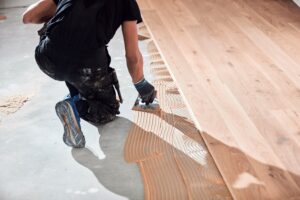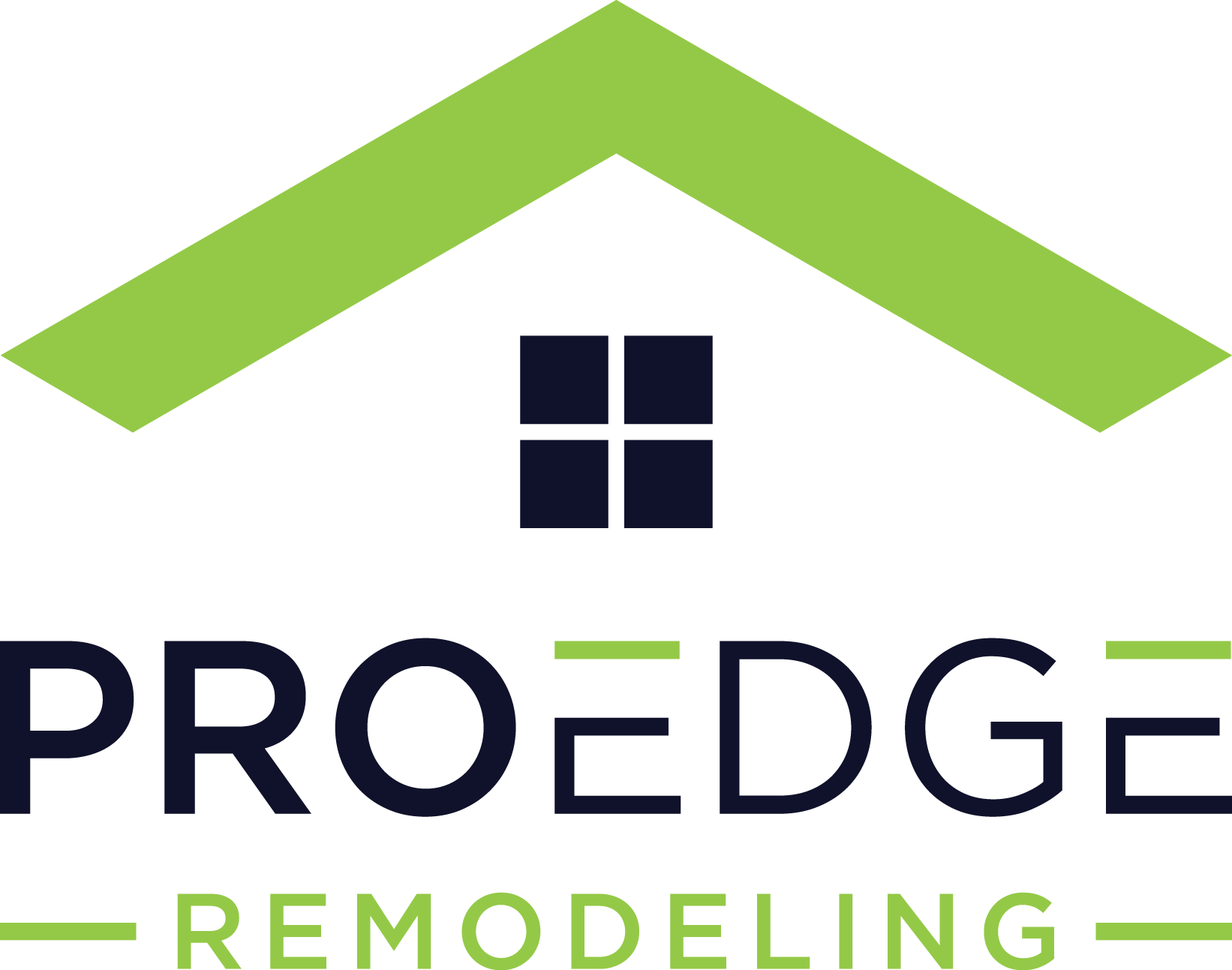Flooring Installation Cost Guide

*Updated on November 18th, 2024
Flooring is the foundation of your home’s style and comfort, setting the tone for each room and influencing both aesthetics and functionality. Whether you’re upgrading outdated flooring or selecting materials for a new space, the right choice can transform your home’s look and feel. Beyond aesthetics, a flooring update can also offer a substantial return on investment (ROI) if you plan to sell, making it a practical decision for homeowners focused on value.
On average, replacing flooring in a 500-square-foot area can range from $3,000 to $4,000, though costs can vary widely based on factors like material type, labor, room layout, and preparation needs. In this guide, we’ll break down all the essential elements that affect flooring installation costs, helping you make informed decisions that align with your budget and style preferences. From material options to installation fees, here’s everything you need to know to plan your flooring project.
How Much Does Flooring Cost Per Square Foot?
Flooring cost per square foot starts at less than $1 for lower quality floors, such as laminate, and as high as $10 per square foot for wood flooring. Tile and carpet flooring usually fall somewhere between those numbers, although it’s possible to find affordable carpeting at less than $1 a square foot. However, it may not last long.
Factors Affecting Flooring Installation Costs
Like any home improvement, the total installation cost for flooring won’t be the same for everyone. The following factors can affect your flooring installation cost:
1. Type of Flooring
As mentioned above, different flooring types range in cost. This is usually the most significant factor in the cost of installing flooring. When choosing your flooring type, determine your desired look, the room’s function, and your desired ROI.
For example, some floors don’t work well in areas with water, like the bathroom and laundry room, because they aren’t water resistant. Wood flooring is a good example. You’d waste money installing wood flooring in a bathroom because it would likely warp or get mold, whereas laminate or vinyl, both cheaper options, work great in bathrooms.
2. Type of Underlayment
Underlayment is the layer underneath the flooring you see. It’s an essential part of your flooring and will increase the flooring installation cost. In addition, the underlayment’s quality determines the floor’s durability.
If you’re installing carpeting, padding is necessary to achieve a soft feeling when you walk on it. It also helps absorb spills or water damage. Like most home improvement options, there are options for basic to premium padding. But, of course, the higher quality increases the cost.
Tile and hardwood flooring requires an underlayment as well. Tile needs it to keep the tiles even and to prevent cracking, and hardwood needs it for smoothness.
The higher the quality of the underlayment, the more it costs. Plus, if you’re replacing the current underlayment and need the contractors to remove it, they will charge to take it off and dispose of it.
3. Flooring Size
Of course, the amount of space you need to cover determines the cost of the floor. The more room you have to cover, the more it costs. Also, the type of area you’re installing the flooring matters. For example, it might cost more to install flooring on stairs than in a perfectly square room.
4. Extra Materials
Always assume you’ll need extra materials when installing flooring. Budgeting 10% to 15% more flooring than you need is always a good idea. This allows for mistakes or flexibility in case something was mismeasured.
Other extra materials may include trim or quarter rounds, special tools to install the flooring or any other issues the installers run into.
5. Type of Labor
Who you hire to install the floor will affect the pricing too. You can hire a professional company or wait for someone installing floors ‘on the side.’ Big box stores usually have installers they hire out and cost the most, whereas a contractor who runs a small business may charge less. As you start your search, check out tips and tricks for finding the right contractor.
6. Flooring Removal and Disposal
If you have existing flooring that needs to be removed, it will add to the installation cost. Removing materials like tile or glued-down carpet can be labor-intensive, increasing both labor costs and disposal fees, as contractors need to remove and properly dispose of the old flooring.
7. Room Layout and Complexity
Simple rooms with square or rectangular layouts are easier and quicker to install, while complex layouts with multiple corners, alcoves, or closets may increase labor time and cost. Additionally, areas like stairs, fireplaces, or built-in cabinets may require special cuts or techniques, impacting the overall cost.
8. Geographic Location and Market Rates
Labor and material costs can vary significantly based on location. Areas with a higher cost of living or higher demand for flooring contractors may have higher rates, impacting overall installation expenses.
9. Special Flooring Patterns of Designs
Custom patterns, like herringbone or parquet, require more skill and time to install, which can increase labor costs. This also applies to intricate tile patterns, borders, or decorative inlays, which add visual appeal but come at a premium.
How Much Do Most Contractors Charge to Lay Flooring?
The cost to install flooring varies depending on the type of flooring. On average, contractor rates for flooring installation are:
Hardwood Flooring
Labor Cost Range: $3 – $7 per square foot
Hardwood flooring installation requires skilled professionals, as it involves precise cutting, nailing, and sanding. The type of wood, installation method (nail-down, glue-down, or floating), and the need for custom staining or finishing can all impact labor costs.
Laminate or Vinyl Flooring
Labor Cost Range: $1 – $2 per square foot
Laminate flooring installation is relatively straightforward and typically less expensive than hardwood. However, the need for underlayment, transitions, and trimming around obstacles can increase labor costs.
Carpet Flooring
Labor Cost Range: $0.50 – $3 per square foot
Carpet installation is generally less labor-intensive than other flooring types. However, the need for carpet padding, seaming, and custom cutting around obstacles can impact labor costs.
Tile (Ceramic or Stone)
Labor Cost Range: $6 to $10 per square foot.
For a 12×12 bathroom (144 sq ft), $1,440 to $2,880 total. Tile installation requires mortar, grout, and specialty tools to cut and lay the tiles.
Floor installation labor costs vary in different regions due to cost of living and the availability of flooring contractors. It’s a good idea to get multiple quotes from flooring contractors before making a decision.
Ways to Save on Flooring Installation Costs
Installing new floors in your home can be an expensive undertaking. However, there are several effective strategies to cut floor installation costs without compromising on quality.
Working with a professional flooring installer doesn’t mean you have to overspend. With the right balance of DIY efforts outlined below and professional installation help, you can achieve your desired flooring finish within your budget.
Cutting Costs on Flooring Installation: DIY Prep Work
Completing preparatory tasks yourself before the flooring installers arrive can reduce their billable hours and save you money. Clear the room of furniture and appliances, remove baseboards and trim, and pry up any existing flooring yourself. Then, the installation team can focus solely on putting down the new flooring. However, make sure to leave any structural work to the professionals to avoid potential damage.
Save Money by Moving Furniture Yourself
Unless you require flooring installers to move heavy furniture, save money by handling moving needs yourself. Have friends or family help shift smaller pieces, and lift and slide furniture on furniture sliders or blankets. Just ensure the flooring crew has enough space to work and access any areas they need.
Choose Standard Sizes and Styles
Opting for standard sizes and styles over custom or unique cuts can save money, as installers can work faster with more readily available materials. Custom cuts or sizes often add labor time and increase material waste.
Time Your Purchase for Seasonal Sales
Flooring stores often hold sales during certain times of the year, especially during holiday weekends or end-of-season clearance events. Planning your purchase around these sales can help you get quality materials at discounted prices.
Get Multiple Quotes
Comparing quotes from different installers or contractors can help you find the best price. Don’t be afraid to negotiate or ask for a price match if you find a lower rate elsewhere.
Striking the Right Balance Between Cost and Quality
Choose high-quality, durable flooring materials that will last but at an affordable mid-range price point. Luxury flooring options often come with premium price tags, while cheaper products usually mean replacing floors sooner. Seek out sales and discount flooring retailers to find good deals on materials that will hold up well.
Exploring Budget-Friendly Flooring Alternatives
Consider fiberboard, laminate, linoleum or vinyl flooring instead of wood or stone which tend to be more expensive. These alternative materials provide an authentic wood or stone look at a lower cost. Refinishing existing wood floors or applying stone-like coatings to concrete floors are also inexpensive options for changing the style and condition of current floors.
Source Your Own Materials for Greater Savings
Buy flooring materials yourself instead of paying marked-up prices from the installation company. Check local flooring retailers or shop online for the best deals. However, make sure you order the proper amount and type of materials for your space to avoid costly mistakes. You’ll also want to ensure any installer warranty will still be valid if you provide your own materials.
What about DIY Flooring?
If you want to install flooring yourself, you might be able to, but you must know what you’re doing and have the time. Installing flooring can take a few hours to a few days, depending on how much of your home you cover.
For wood or concrete floors that have seen better days, refinishing or making minor repairs is an affordable alternative to replacement. Sanding, staining, sealing and polishing wood floors or applying concrete stain, sealers or epoxy coatings can restore and enhance existing floors at a fraction of the cost of new flooring installation.
If replacing all your flooring at once isn’t in the budget, start with a smaller space like a half-bathroom, closet or laundry room. This allows you to save up money for larger rooms and gain experience for tackling future flooring projects yourself. You can also budget to do one room at a time, starting with the most needed or visible areas.
You’ll typically pay $1 – $15 per square foot in materials and don’t have to pay for labor. However, it would help if you considered your time since time is money. Also, have room in your budget for emergency help if you encounter any installation issues..
Final Thoughts
When considering the flooring installation costs, there are many factors to take into account. First, start with the type of flooring you want and determine the average cost per square foot. Then, decide whether it fits your budget for the area you want to cover, and don’t forget to factor in all extra costs.
The key to good flooring is ensuring you can afford a quality underlayment. The top layer can be any flooring that fits your budget. If you’re in need of inspiration when it comes to types of flooring, we’ve got you covered. Today, laminate and vinyl options mimic more expensive materials but at a fraction of the price. The key is to give the lower layer a solid base to ensure the floor lasts.
FAQ
How long does flooring installation usually take?
It depends on the flooring type and size of the space, but typically 1-5 days. Carpet is faster than hardwood or tile. Consult your flooring installer for an accurate timeline.
What type of flooring adds the most value to a home?
Hardwood flooring tends to add the most value in comparison to other types of flooring. Hardwood is timeless and versatile; it blends well with any style or color scheme, from modern to traditional. Plus, it adds character and sophistication that potential buyers are drawn to.
Some studies have found that prospective buyers are willing to pay an additional 2% – 3% for hardwood floors in a home compared with other types of flooring options – this amounts to thousands or even tens of thousands more depending on the size of your property!
Are eco-friendly flooring options affordable?
Eco-friendly flooring options include bamboo, cork, linoleum, and recycled materials. They typically cost more than traditional flooring but are sustainable and environmentally friendly.
What should I consider when choosing underlayment?
Consider the underlayment’s durability, moisture resistance, soundproofing ability, cost, and your flooring’s specific needs. Some flooring requires certain underlayment.
How do I know if my subfloor needs repair or replacement?
Check for sagging, uneven, or damaged flooring, cracks, or moisture damage. Consult a flooring professional to determine if repairs or replacement are needed
Additional Flooring Resources
- 10 Questions to Ask While Choosing Floors
- Top Flooring Trends
- Guide to Protecting Your Hardwood Floors

Anna has over six years of experience in the home services and journalism industries and serves as the Content Manager at MyHomePros.com, specializing in making complex home improvement topics like HVAC, roofing, and plumbing accessible to all. With a bachelor’s degree in journalism from Auburn University, she excels in crafting localized, comprehensive guides that cater to homeowners’ unique needs. Living on both coasts of the United States has equipped her with a distinctive perspective, fueling her passion for turning any house into a cherished home through informed, personalized decision-making.








